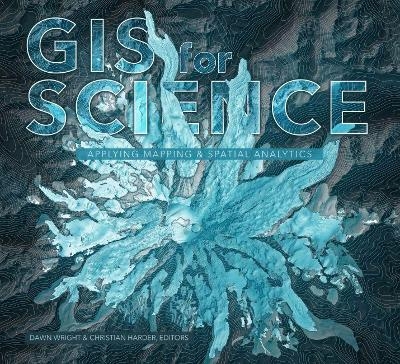
GIS for Science
ESRI Press (Verlag)
978-1-58948-530-3 (ISBN)
GIS for Science presents a collection of real-world stories about modern science and a cadre of scientists who use mapping and spatial analytics to expand their understanding of the world.
The accounts in this book are written for a broad audience including professional scientists, the swelling ranks of citizen scientists, and people generally interested in science and geography. Scientific data are brought to life with GIS technology to study a range of issues relevant to the functioning of planet Earth in a natural sense as well as the impacts of human activity. In a race against the clock, the scientists profiled in this volume are using remote sensing, web maps, Esri StoryMaps, and spatial analysis to document an array of issues with a geographic dimension that range from climate change, natural disasters, and loss of biodiversity, to political strife, polar ice loss, and resource shortages.
These stories present GIS ideas and inspiration that users can apply across many disciplines, making this volume relevant to diverse scientific audience.
See how scientists working on the world's most pressing problems apply geographic information systems—GIS.
Christian Harder is a technology writer and information designer at Esri. He is the author or coauthor of numerous books on GIS, including the The ArcGIS Book (Esri Press, 2017) and The ArcGIS Imagery Book (Esri Press, 2016).
INTRODUCTION
The Science of Where: A Framework and a Process
How the Book Works
Reflections on a Blue Marble: An Astronaut’s View
SECTION 1: How the Earth Works
Global Ecosystem Mapping
GIS as a Scientific Workbench: Pacific Gyre
What Lies Beneath: LIDAR in Geology
The Anatomy of Super Volcanos
Understanding Polar Ice Loss
Predicting Seagrass Occurrence
SECTION 2: How the Earth Looks
Extreme Heat Events
Mapping Human Settlement
Finding a Way Home: An Analysis of Homelessness
EnviroCar: Big Data Analytics
Fighting Sea Level Rise with Artificial Reefs
Diverse Farms, Diverse Foods
Emerging Hotspots of Forest Loss
Forestry Inventory Analysis
Mapping Avian Species Migration
SECTION 3: How we look at the Earth
Identifying the Natural Efficient Frontier
Lidar Tree Canopy Mapping
Mapping Ancient Landscapes
SECTION 4: GIS SciTech from Esri Briefs
The US National Water Model
Equal Earth Projection
3D Marine Data interpolation
The Science of the Hex
Machine Learning Capabilities
World Population Estimate
Green Infrastructure
The Living Atlas
Story Maps for Science
Planetary GIS
ArcGIS Earth
Imagery Workbench for Science
Polar Ice App
Jupyter Python Notebook
SECTION 5: Training Future Generations of Scientists
A Glacier in Retreat
“Panamapping:” Rainforest Conservation in Panama
Evolution of Students’ Spatial Skills
Next Steps: Learning GIS
| Erscheinungsdatum | 28.07.2019 |
|---|---|
| Reihe/Serie | GIS for Science |
| Zusatzinfo | Illustrations |
| Verlagsort | Redlands |
| Sprache | englisch |
| Maße | 254 x 279 mm |
| Themenwelt | Naturwissenschaften ► Geowissenschaften ► Geografie / Kartografie |
| Naturwissenschaften ► Geowissenschaften ► Geologie | |
| ISBN-10 | 1-58948-530-0 / 1589485300 |
| ISBN-13 | 978-1-58948-530-3 / 9781589485303 |
| Zustand | Neuware |
| Haben Sie eine Frage zum Produkt? |
aus dem Bereich


